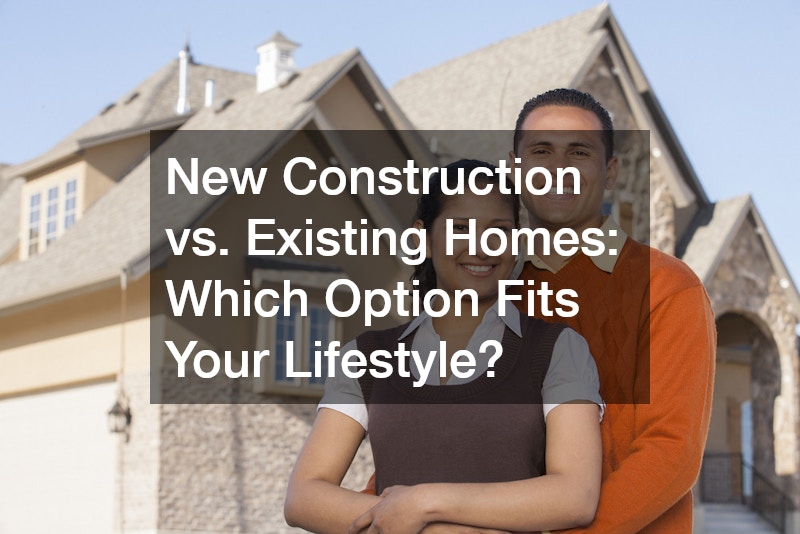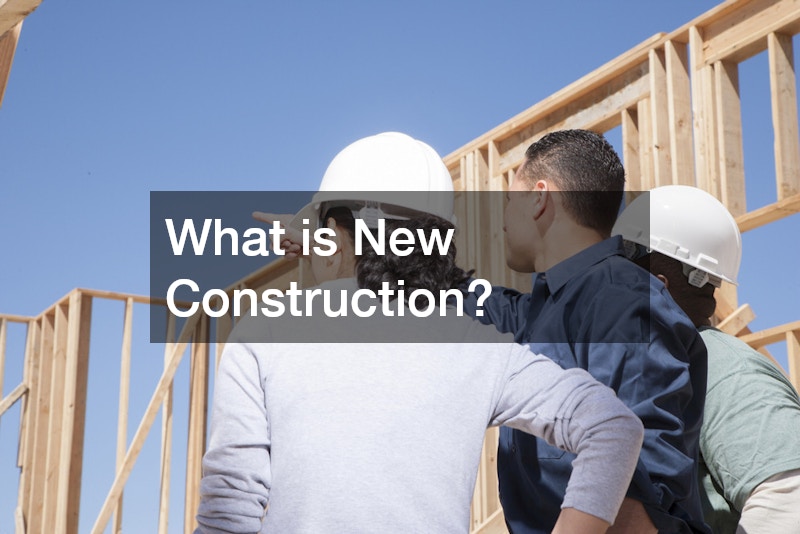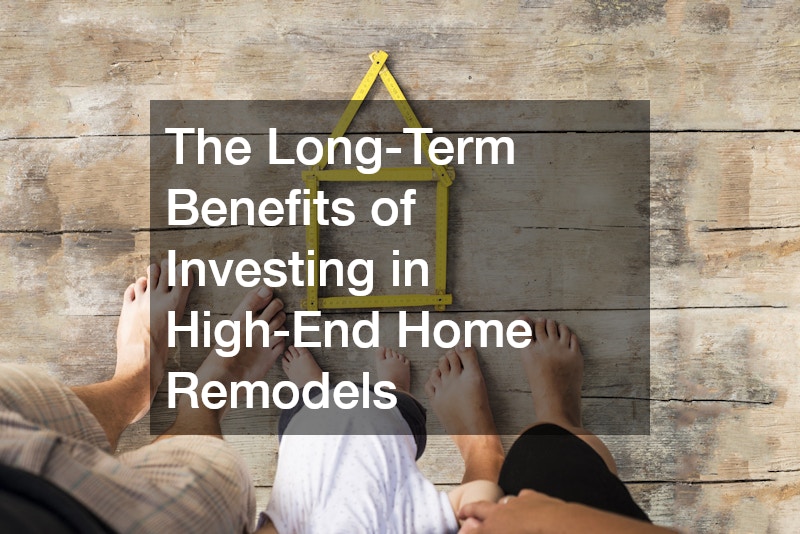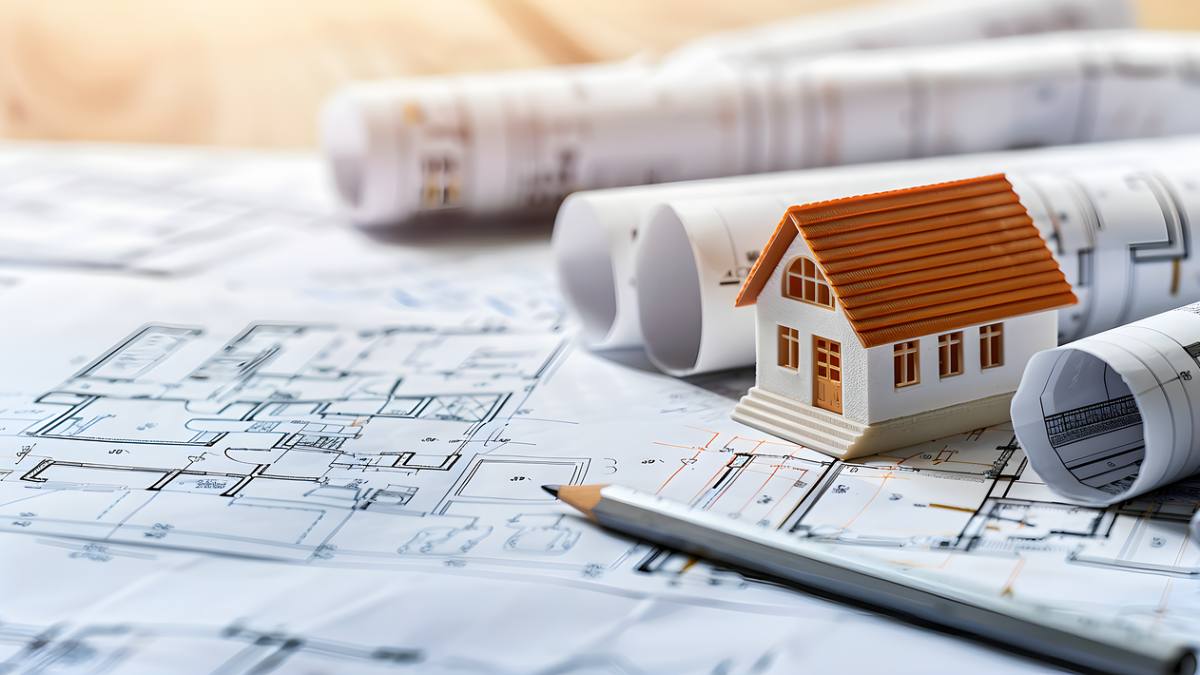
New Construction vs. Existing Homes: Which Option Fits Your Lifestyle?
When it comes to buying a home, one of the most significant decisions prospective buyers face is whether to invest in a newly constructed house or purchase an existing home. Both options have their own set of advantages and disadvantages, depending on your needs, preferences, and long-term goals. In this article, we’ll explore the differences between new construction and existing homes, weigh their pros and cons, and provide practical advice to help you make the best choice based on your lifestyle and the experience of becoming a homeowner.
What is New Construction?

New construction refers to homes that have been recently built and have never been lived in before. These homes are typically developed by builders and are often part of planned communities, developments, or subdivisions. New construction homes can be customized to varying degrees, depending on the builder and project. From the floor plan to the finishes, new construction homes offer the opportunity to create a space tailored to your tastes and needs.
Types of New Construction Homes:
- Spec Homes: These homes are built according to a developer’s predetermined plans and are typically ready for sale when construction is completed.
- Custom Homes: With custom homes, buyers can work directly with the home builder to design every detail, from floor plans to finishes.
- Semi-Custom Homes: A hybrid of spec and custom homes, semi-custom homes allow buyers some flexibility to personalize features while maintaining standard layouts and designs.
Building Process:
1. Planning and Design:
The process starts with the selection of a lot and designing the home, either from scratch or based on available plans. A key part of this phase is site preparation, which may involve clearing the land and ensuring it’s ready for construction. This is where an excavation contractor can play a crucial role in leveling the lot and performing any necessary groundwork.
2. Construction:
Builders oversee the construction, managing timelines and hiring subcontractors for specific tasks such as electrical, plumbing, and roofing. The construction phase involves many stages, from laying the foundation to framing the structure, and each step requires specialized skills and expertise.
3. Completion and Handover:
Once the house is built, it’s ready for move-in, often with warranties for major systems like HVAC, plumbing, and appliances. At this stage, any final inspections are conducted, and the home builder will hand over the property, ensuring everything is up to code and ready for the new owners.
New construction offers the benefit of owning a brand-new home that has never been lived in, making it a fresh canvas for the buyer.
Advantages of New Construction Homes
New construction homes come with a variety of advantages, particularly for buyers seeking modern amenities, energy efficiency, and minimal maintenance. Here are some key benefits of opting for a newly built home:
1. Modern Features and Customization:
New homes are designed with the latest trends in architecture, technology, and functionality. Buyers can often choose from a variety of finishes, flooring options, and layouts to suit their personal preferences. If you prefer a highly personalized living space, working with a luxury custom home builder allows you to tailor every aspect of your home, from floor plans to intricate design details.
Customization options can range from choosing the countertop material to selecting fixtures or room layouts, providing a sense of ownership and involvement in the design process.
2. Energy Efficiency:
One of the primary advantages of new construction homes is their energy efficiency. Builders today are focused on creating homes that use less energy, thanks to better insulation, advanced heating and cooling systems, and energy-efficient appliances.
Many new homes also include environmentally friendly features such as solar panels, energy-efficient windows, and smart home technologies that can help save on utility bills in the long run.
3. Low Maintenance and Fewer Repairs:
Since everything in a new home is brand new, it’s likely to require less maintenance than an older property. Buyers can expect fewer repairs during the first few years, which can save both time and money.
New construction homes also come with warranties for major systems and appliances, offering additional peace of mind.
4. Warranty Protection:
New homes typically come with builder warranties that cover structural issues, plumbing, electrical, and other aspects of the home. This protection is a valuable benefit for homeowners, as it helps mitigate the cost of repairs during the first few years.
Some builders even offer extended warranties on specific systems, such as heating and air conditioning systems or appliances, giving homeowners extra reassurance about their new investment.
Disadvantages of New Construction
Despite the many advantages of new construction homes, there are a few notable drawbacks that potential buyers should consider before making a decision:
1. Higher Initial Cost:
New homes tend to have a higher upfront cost compared to existing homes, particularly in sought-after neighborhoods or upscale developments. Builders often charge a premium for the opportunity to live in a brand-new, modern home.
Buyers may need to factor in additional costs for upgrades, finishes, and landscaping, which can quickly add to the overall price.
2. Limited Character and Charm:
While new construction homes are designed with modern aesthetics, they can sometimes lack the unique character and charm that many buyers find in older homes. Custom touches, such as intricate woodwork or historical architecture, are often absent in newly built properties. Some buyers may miss the feeling of history and craftsmanship that older homes offer.
3. Longer Wait Time:
Depending on the stage of construction and the builder’s timeline, it may take several months to complete a new construction home. This waiting period can be frustrating for those eager to move into a new home immediately.
Delays can also occur due to weather conditions, labor shortages, or supply chain issues, making the completion date uncertain.
4. Potential for Construction Disruptions:
If you’re buying in a newly developed area, there may be ongoing construction in the neighborhood or surrounding areas. This could mean dealing with noise, dust, and the disruption of construction activity for an extended period.
The lack of mature landscaping or finished amenities in a new community can make the environment feel less settled than in established neighborhoods.
What is an Existing Home?

An existing home refers to a property that has been previously owned and lived in by others. These homes are typically older and have been on the market for some time before a buyer purchases them. The age of the home can range from a few decades to over a century, with each era offering distinct architectural styles and features.
Types of Existing Homes:
- Single-Family Homes: A standalone property that typically offers more privacy and outdoor space.
- Townhouses: Multi-level homes that share walls with neighboring units, often in a row or a cluster of buildings.
- Condominiums: Individual units within a larger building or complex, with shared spaces such as parking or recreational areas.
Considerations When Buying an Existing Home:
- Home Inspection: Buyers should have a thorough inspection conducted to identify any potential issues with the foundation, plumbing, or electrical systems.
- Renovation Potential: Existing homes often present the opportunity to renovate and personalize the space, whether through remodeling or updating certain features.
An existing home may offer more room for negotiation in price and could provide a better sense of the community and surrounding area compared to a new build.
Benefits of Existing Homes
There are several benefits to purchasing an existing home, particularly for buyers who are looking for more flexibility in terms of location, character, and price:
1. Established Neighborhoods:
One of the biggest advantages of buying an existing home is the opportunity to live in an established neighborhood. These areas typically have mature trees, parks, and a developed sense of community. You’ll also be able to observe how the neighborhood has evolved over time, which can give you a better idea of its long-term prospects.
Established communities often come with more amenities, such as local shops, top preschools, and restaurants, adding to the convenience and lifestyle appeal of the location.
2. Lower Cost:
Generally, existing homes come at a lower price point compared to new construction. You may be able to afford a larger home or a better location for the same price as a smaller new build.
In some cases, sellers may be more willing to negotiate on price, especially if the home has been on the market for a while.
3. Unique Charm and Character:
Existing homes often come with unique architectural styles, vintage details, and custom features that give them a sense of charm and personality. From hardwood floors to intricate molding, older homes can offer elements that are difficult to find in modern construction.
Many buyers are drawn to the character of older homes, which often feature custom touches that reflect the history and craftsmanship of the time.
4. Immediate Move-In:
Once you’ve closed the deal, you can move into an existing home right away, which can be an attractive option for buyers who need to relocate quickly.
There’s no waiting for construction to be completed, and the home is likely ready to be lived in, saving you time.
Drawbacks of Buying an Existing Home
While existing homes offer several benefits, there are also some significant downsides to consider:
1. Higher Maintenance and Repair Costs:
Older homes may come with hidden problems or outdated systems, such as old wiring, plumbing issues, or a deteriorating roof. Roof repairs can be particularly costly, especially if the roof is nearing the end of its lifespan. These repairs can be both expensive and time-consuming.
In many cases, buyers may need to invest in renovations or updates to make the home meet their expectations, which can add significantly to the overall cost.
2. Outdated Features:
Existing homes may have features or layouts that feel dated or no longer meet modern standards. Kitchens, bathrooms, and flooring may need to be updated, which can be an expensive and disruptive process. Additionally, outdated roofing may require repairs or replacement, adding to the overall renovation cost.
You may also encounter smaller closets, lower ceilings, or less open floor plans compared to newer homes, depending on the age of the house.
3. Limited Customization:
Unlike new construction, you won’t be able to personalize the layout or design of an existing home unless you embark on a significant renovation. This can be a limitation for buyers who want a completely customized space.
4. Unknown History and Potential Problems:
Existing homes come with the risk of hidden problems that may not be immediately apparent during the home inspection. Previous owners may have neglected necessary repairs or failed to maintain the home properly, which could lead to costly surprises down the line.
Major Factors to Consider in Your Decision

Deciding between a new construction home and an existing home depends on several factors, including your personal preferences, budget, and lifestyle. Here are the most important aspects to consider when making your decision:
1. Budget:
New construction homes tend to be more expensive, especially in sought-after neighborhoods. You’ll need to consider not only the initial price but also ongoing maintenance costs and any customization or upgrades you might want to make. On the other hand, existing homes may be less expensive upfront, but they could require significant repairs or renovations, which might push the total cost higher than expected.
2. Timeline and Urgency:
If you need to move quickly, an existing home may be the best option. With many homes available for immediate occupancy, you could close quickly and move in within a month or two. In contrast, new construction homes often take several months to complete, and if you’re buying in a newly developed area, there may be delays due to unforeseen construction challenges. In either case, don’t forget to review your home insurance plan to ensure you’re covered during the transition.
3. Location Preferences:
New construction homes are often located in newly developed suburbs or planned communities, which might offer modern amenities but could be further from city centers or established social hubs. Existing homes, on the other hand, are typically found in more established neighborhoods with schools, parks, and other services already in place.
4. Contracts and Assistance
When buying a home, understanding the legalities of the purchase is essential. A real estate lawyer can help ensure the contract is clear and fair, protecting your interests throughout the transaction. They can also assist with issues such as seller disclosures, contingencies, and any potential zoning or legal restrictions, offering valuable guidance as you navigate the process.
5. Maintenance and Future Costs:
Consider how much time and money you’re willing to invest in maintaining your home. New construction homes are more likely to need fewer repairs during the first few years, while existing homes may come with a higher risk of unexpected repairs due to aging systems or infrastructure.
6. Personalization:
If you have a strong vision for your home and want to choose every detail, a new construction home might be the better fit. While existing homes offer the charm of past generations, they may lack the flexibility to fully customize the space without extensive renovations.
Real-Life Scenarios: Which Home Fits Which Lifestyle?

Choosing between new construction and an existing home often depends on lifestyle preferences, needs, and long-term goals. Let’s explore a few real-life scenarios to help illustrate which option may be more suited for various lifestyles:
Scenario 1: The Growing Family
For a family with young children who values a home with modern amenities, energy efficiency, and low maintenance, a new construction home could be a perfect fit. These homes offer modern floor plans with spacious bedrooms, updated kitchens, and energy-efficient appliances, all important for a growing family. Additionally, many new developments feature family-friendly amenities like parks and walking trails. The ability to customize the home with features that suit the family’s lifestyle—such as a large kitchen island, an extra bathroom, or a finished basement—adds to the appeal.
Why a New Construction Home Works:
- Modern layout and larger rooms to accommodate family growth.
- Newer, energy-efficient systems to save on utilities.
- Lower maintenance needs, reducing time spent on repairs and improvements.
Scenario 2: The Young Professional
A young professional who values an easy commute, access to social activities, and a home that’s ready to move into immediately might find an existing home to be the better option. Older homes often come with established charm, unique architectural details, and a sense of character that could appeal to someone looking for a home with personality. Additionally, existing homes in established neighborhoods may offer shorter commutes to work, proximity to entertainment, and easier access to local services.
Why an Existing Home Works:
- Established neighborhood with a vibrant social scene.
- Lower cost compared to new builds, making it more affordable for a first-time buyer.
- The ability to move in quickly and immediately begin enjoying the home and neighborhood.
Scenario 3: The Retiree
For retirees looking to downsize and live in a low-maintenance home, new construction can offer significant advantages. Homes in communities designed for older adults often include features like ramps, wider doorways, and smart home systems to ensure comfort and accessibility. With fewer concerns about maintenance and repairs, retirees can focus on enjoying their golden years. They just need to secure a solid house insurance policy to protect against any unexpected issues, giving them peace of mind as they settle into their new home.
Why a New Construction Home Works:
- Customization options to include features that meet specific needs, such as accessibility features.
No immediate maintenance or repair concerns. - Often located in communities with amenities designed for retirees, such as recreational activities and healthcare facilities.
Scenario 4: The Investor
An investor looking for a property with potential for significant appreciation may find that purchasing an older, existing home in a developing area is a better investment strategy. Existing homes in up-and-coming neighborhoods may offer a lower price point and the opportunity to renovate and increase the home’s value. After renovation, the home can be resold for a profit, especially if the area is undergoing significant gentrification or development.
Why an Existing Home Works:
- Lower initial purchase cost allows for investment in renovations.
- Potential for substantial property value appreciation after updates and improvements.
- Opportunity to buy in a desirable area before it becomes more expensive.
Scenario 5: The Homebody
A homebody who enjoys spending time at home and wants a sanctuary that requires little maintenance might find new construction to be the better option. New homes often come with modern finishes, advanced technology, and energy-efficient features that align with a desire for comfort and convenience. These homes may also offer smart home systems that provide convenience in managing daily tasks like temperature control, lighting, and security.
Why a New Construction Home Works:
- Modern technology and features that enhance comfort and convenience.
- Lower maintenance and repair needs, allowing for more time spent enjoying the home.
Ability to personalize the home to fit specific preferences for relaxation and comfort.
The Bottom Line
Choosing between new construction and existing homes depends on a variety of factors, including budget, location preferences, desired features, and the timeline for moving in. New construction homes offer the benefits of modern amenities, energy efficiency, and customization but come with a higher price tag and potential construction delays. Existing homes, while possibly requiring more maintenance, offer character, established neighborhoods, and a potentially lower price point.
Ultimately, the right decision depends on your specific lifestyle needs. Whether you’re looking for a brand-new home with the latest features or an older home with unique charm and history, it’s essential to consider your long-term goals, the amount of time and money you’re willing to invest, and how the home fits into your lifestyle. With careful consideration, you can find the home that best suits your needs and makes you feel truly at home. Becoming a homeowner is an exciting milestone, and with thoughtful planning, you can make the best choice for your future.



